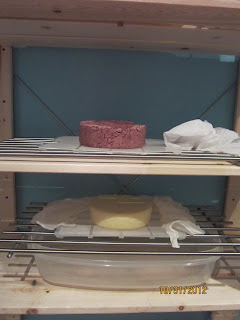I have been busy with so many other things I haven’t had
time or felt like writing on this blog of mine. I am amazed by all these
bloggers that manage to write on their blogs daily and do all the things they
are writing about……where do they find the time? Do they get to sleep? Get to
spent time on the sofa with their spouse, kids/……I don’t think I could keep up
with that, nor do I want to.
I have too many things I like to do during the day and when I am done for the day, I just have no energy left for writing. I also think my evening is time to spent with my husband, family and friends not with the online community. So my blog, even I sometime think I should share more, it still will always be secondary to the life I am living, because living and enjoying life is more important as this blog.
I have too many things I like to do during the day and when I am done for the day, I just have no energy left for writing. I also think my evening is time to spent with my husband, family and friends not with the online community. So my blog, even I sometime think I should share more, it still will always be secondary to the life I am living, because living and enjoying life is more important as this blog.
I will try to share with you, but I won't try that hard. I'll keep finding more things to keep busy
with and things I want to learn, try, do.......the list is getting longer. I've
been always a hands on person, creative, crafty and resourceful. Why buy
something you can make yourself? I like to tinker and make things, I like to
grow things, make my own food, cakes, jams, pickles.....I enjoy eating good
food, and if I can make it myself.....so much better.
So I just went on another journey.....the journey of cheese making. Last year I met this women outside of town, I call her "goat lady" who has goats, milking goats, cheese milk type of goats and she is getting me goat-milk. So I started making farm type fresh goat cheeses, chevre types or hand cheeses. Then I found a young farmer that sells Raw milk herd shares. So I signed up with him. And since 2 weeks ago there is only one kid left in the house, I have more milk, then we use for fresh use.......so I have been busy making cheese and learning about cheese making.......been hanging around the internet cheese sites all week.
So I just went on another journey.....the journey of cheese making. Last year I met this women outside of town, I call her "goat lady" who has goats, milking goats, cheese milk type of goats and she is getting me goat-milk. So I started making farm type fresh goat cheeses, chevre types or hand cheeses. Then I found a young farmer that sells Raw milk herd shares. So I signed up with him. And since 2 weeks ago there is only one kid left in the house, I have more milk, then we use for fresh use.......so I have been busy making cheese and learning about cheese making.......been hanging around the internet cheese sites all week.












